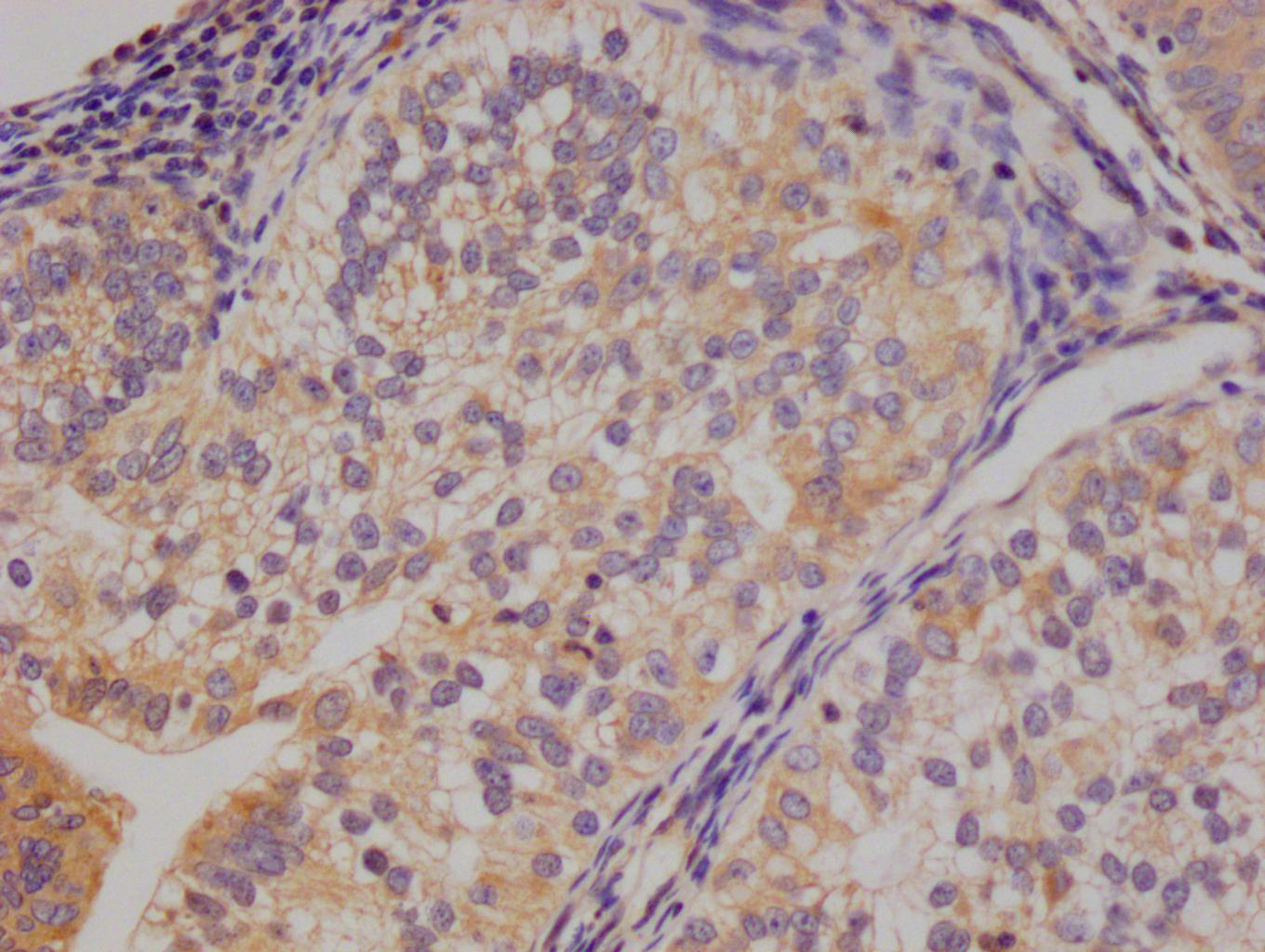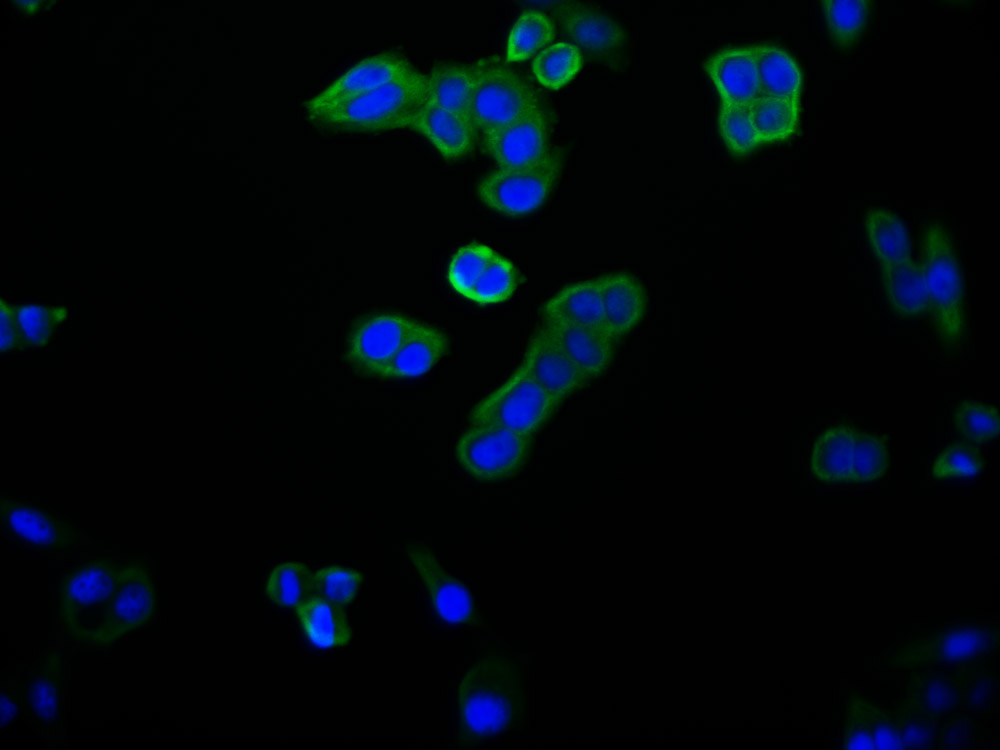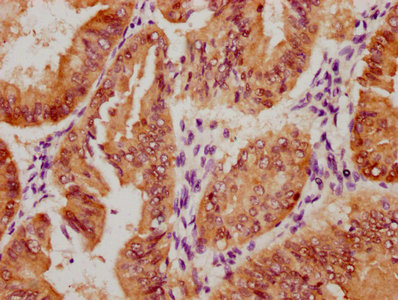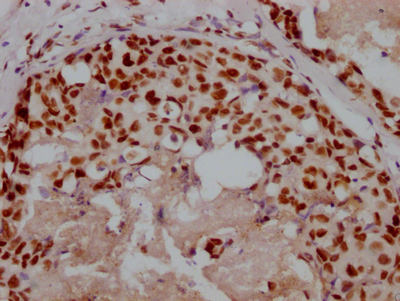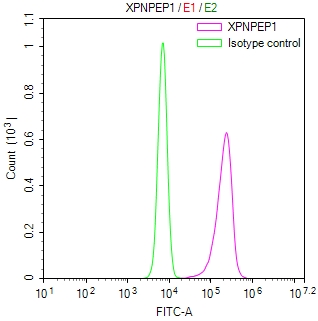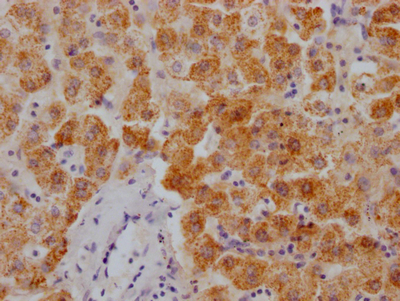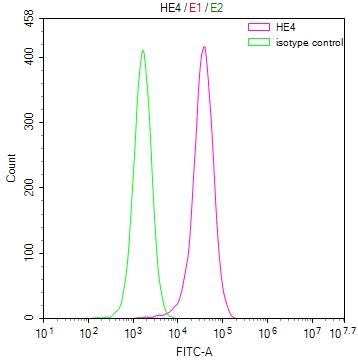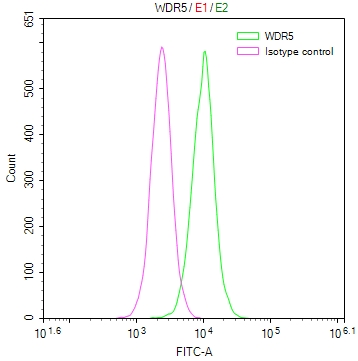PTPRT Antibody
-
货号:CSB-PA871189
-
规格:¥1100
-
图片:
-
其他:
产品详情
-
Uniprot No.:O14522
-
基因名:PTPRT
-
别名:Protein tyrosine phosphatase receptor type T antibody; PTPRT antibody; PTPRT_HUMAN antibody; R PTP T antibody; R-PTP-T antibody; Receptor protein tyrosine phosphatase antibody; Receptor-type tyrosine-protein phosphatase rho antibody; Receptor-type tyrosine-protein phosphatase T antibody; RPTP-rho antibody; RPTPmam4 antibody; RPTPrho antibody
-
宿主:Rabbit
-
反应种属:Human,Mouse
-
免疫原:Synthetic peptide of Human PTPRT
-
免疫原种属:Homo sapiens (Human)
-
标记方式:Non-conjugated
-
抗体亚型:IgG
-
纯化方式:Antigen affinity purification
-
浓度:It differs from different batches. Please contact us to confirm it.
-
保存缓冲液:-20°C, pH7.4 PBS, 0.05% NaN3, 40% Glycerol
-
产品提供形式:Liquid
-
应用范围:ELISA,IHC
-
推荐稀释比:
Application Recommended Dilution ELISA 1:1000-1:5000 IHC 1:25-1:100 -
Protocols:
-
储存条件:Upon receipt, store at -20°C or -80°C. Avoid repeated freeze.
-
货期:Basically, we can dispatch the products out in 1-3 working days after receiving your orders. Delivery time maybe differs from different purchasing way or location, please kindly consult your local distributors for specific delivery time.
相关产品
靶点详情
-
功能:May be involved in both signal transduction and cellular adhesion in the CNS.
-
基因功能参考文献:
- The single cell genotyping not only confirmed the co-occurrence of the PTPRT, CAND1 and DOCK6 mutations in the same AML clone but also revealed a clonal hierarchy, as the PTPRT mutation was likely acquired after the CAND1 and DOCK6 mutations. PMID: 27244256
- PTPRT promoter methylation is significantly associated with sensitivity to STAT3 inhibition in HNSCC cells, suggesting that PTPRT promoter methylation may serve as a predictive biomarker for responsiveness to STAT3 inhibitors in clinical development PMID: 25982282
- Data reported evidence that rs2866943 polymorphism in PTPRT 3'-UTR was involved in the occurrence of esophageal squamous cell carcinoma by acting as a protective factor while rs6029959 acts as a risk factor. PMID: 25967969
- Data show that hepatitis B virus X protein mutant HBxDelta127 enhances proliferation of hepatoma cells through up-regulating miR-215 targeting protein tyrosine phosphatase, receptor type T (PTPRT). PMID: 24434140
- tumor-specific mutational events in the PTPRT gene can serve as direct drivers for tumor growth by inducing hyperactivation of STAT3, a potent oncogenic transcription factor and PTPRT substrate PMID: 24395800
- The catalytic domain point mutants show a decreased thermal and thermodynamic stability and decreased activation energy relative to phosphatase activity, when compared to wild- type PMID: 22389709
- [review] High-throughput mutational analysis identifies loss-of-function mutations in six PTPs in human colon cancers, providing critical cancer genetics evidence that PTPs can act as tumour suppressor genes. PMID: 21517784
- Data show that paxillin is a direct substrate of PTPRT and that PTPRT specifically regulates paxillin phosphorylation at tyrosine residue 88(Y88). PMID: 20133777
- alterations of the PTPRT-mediated signaling pathway by PTPRT phosphatase domain mutation may not play a critical role in the development of common human cancers PMID: 17223850
- STAT3 is a substrate of receptor protein tyrosine phosphatase T PMID: 17360477
- brain-specific PTPRT regulates synapse formation through interaction with cell adhesion molecules, and this function and the phosphatase activity are attenuated through tyrosine phosphorylation by the synaptic tyrosine kinase Fyn. PMID: 19816407
显示更多
收起更多
-
亚细胞定位:Membrane; Single-pass type I membrane protein.
-
蛋白家族:Protein-tyrosine phosphatase family, Receptor class 2B subfamily
-
组织特异性:Expressed in colon, lung, heart and testis, as well as in fetal and adult brain. Not detected in muscle and peripheral blood leukocytes.
-
数据库链接:
HGNC: 9682
OMIM: 608712
KEGG: hsa:11122
STRING: 9606.ENSP00000362283
UniGene: Hs.526879
Most popular with customers
-
-
YWHAB Recombinant Monoclonal Antibody
Applications: ELISA, WB, IF, FC
Species Reactivity: Human, Mouse, Rat
-
Phospho-YAP1 (S127) Recombinant Monoclonal Antibody
Applications: ELISA, WB, IHC
Species Reactivity: Human
-
-
-
-
-



